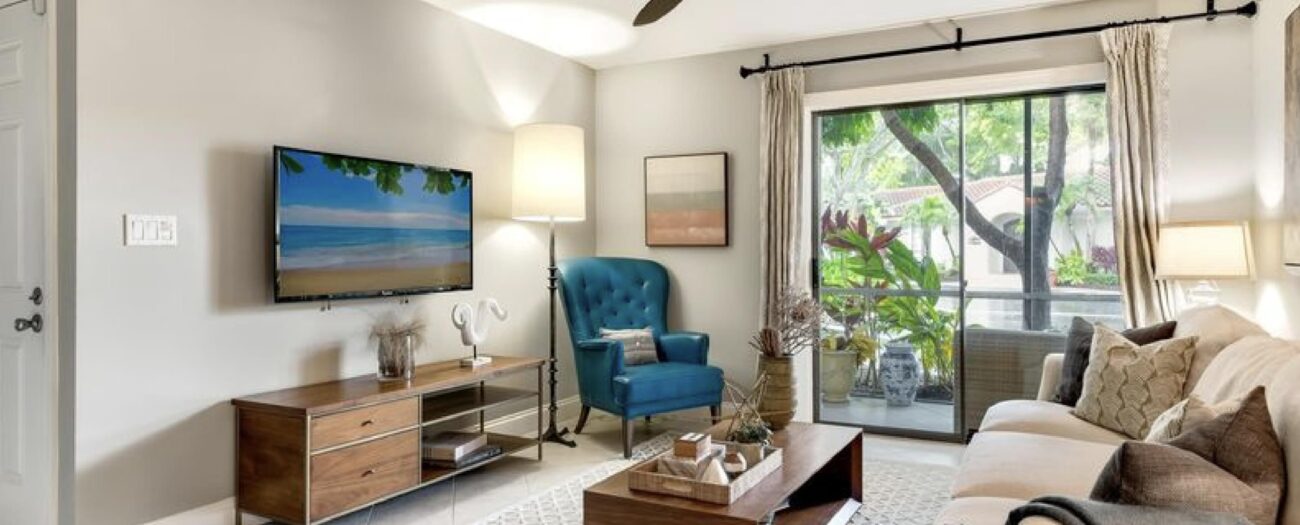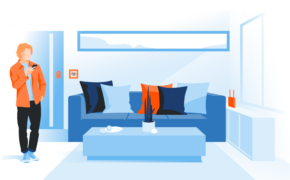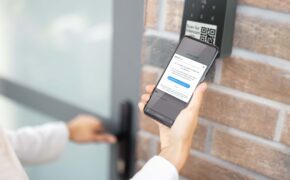Deploying smart home technology across a real estate portfolio can seem like an overwhelming undertaking. Luckily, Rently is here to help you through it.
In previous blogs, we addressed the growing popularity of smart home technology amongst renters, and we encouraged managers to consider how their leasing operations could benefit from this trend.
We looked at the unique physical and operational attributes of a property to see how smart home technology could help to increase the number of tours, attract renters, and streamline everyday leasing tasks. We showed how smart home technology can both create new revenue (ROI) and also lower operating expenses (NOI).
For those managers who recognized the operational advantages of smart home technology upgrades, we offered an overview of many different smart home devices and their features and benefits.
Next, we matched different smart home devices with each phase of the leasing lifecycle to show a targeted impact or how to optimize the entire leasing lifecycle.
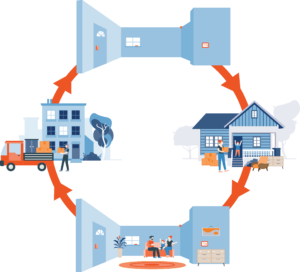
In this blog, we provide you with four steps for deploying smart home technology at your properties.
From Idea to Reality
Many property managers recognize the popularity and value of smart home technology. There is growing enthusiasm about upgrading properties with these popular amenities.
However, getting started can be daunting. Where do I begin? How many devices should I install? Will the renter apps work properly? What provider can I count on for long-term support and success? These are all important questions to ask before starting any deployment.
Taking the idea of deploying smart home technology and turning it into a reality requires managers to make important upfront decisions.
Step One: “Unit-by-Unit” or “All-at-Once”
Whether you choose to upgrade one unit or one hundred units, the pace of your smart home technology deployment should reflect sound financial judgment and ongoing ROI evaluations.
For some operators it might make sense to begin slowly and roll out smart home devices unit-by-unit. This approach allows managers to assess renter engagement and measure potential ROI.
For other operators, it might make sense to initiate a comprehensive “all-at-once” roll-out that maximizes community-wide ROI right away. This approach creates a large multiplier effect when it comes to revenue-generation and operational efficiency.
For example, smaller operators who wish to install smart locks to streamline self-touring might already achieve extra value by upgrading just one or two units.
However, larger operators, with widespread properties, might choose a comprehensive deployment to standardize their operations.
Renter considerations also determine different deployment strategies.
Smaller operators might like to offer their renters a choice of units, some with smart devices, at higher rental rates, and some without, at lower rental rates.
Meanwhile, larger operators may be able to take advantage of purchasing a large quantity of smart home devices at volume discounts, resulting in little impact on rental rates at all.
Once you decide the size and scope of your smart home technology deployment, the next step is to focus on the technical quality of your deployment.
Step Two: Connected System vs. Multiple Platforms
Technical glitches can undermine your hopes of deploying smart home technology smoothly.
After all, the goal is for your smart home devices to improve your renters’ experiences and to enhance your management operations, not cause frustrations.
That’s why it’s best to consider technical issues upfront.
Before smart home devices were offered in integrated kits, managers would often approach installations piece-by-piece, creating a patchwork of devices, each with their own technical protocols and app controls.
Such fragmented deployments often result in connectivity issues. It is not easy to integrate different technical elements (networks, devices, mobile apps, etc.).
Thankfully, smart home technology has evolved towards standardization and many technical issues can be overcome with proper knowledge.
Smart Home Protocols
Zigbee and Z-Wave are the most widely adopted smart home device protocols used today. Both use low-watt radio signals to connect to smart home devices. Zigbee offers a connectivity range of 10 meters while Z-wave extends that range to 30 meters. It’s best to choose smart home devices that use either of these protocols.
After ensuring that your devices can interact with each other using standard protocols, it’s also important to consider how they connect to your local network.
Rather than create separate connections between each device and the network, experienced smart home providers have opted to use a “hub.” A hub connects to all smart home devices and then acts as a router to an outside network.
For example, Rently offers smart home device kits that come pre-paired to our Hub which connects all smart home devices on one network. Our Hub has tri-band (cellular, Wi-Fi and Ethernet) capability so you stay connected.
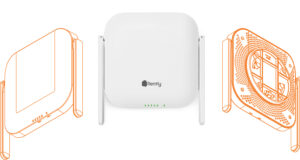
Addressing App Fatigue
Another technical pitfall of installing devices from multiple providers is navigating through myriad apps, each controlling different devices or property functions.
This results in what is commonly referred to as “App Fatigue” because both renters and managers get tired of having to locate and switch between apps.
Rently has addressed “app fatigue” by integrating all smart home control functions on a single desktop platform and on a single mobile app. By creating a smooth integration between software and hardware, Rently’s solution eliminates many headaches for renters and managers.

Step Three: Security Considerations
Finally, when it comes to technical considerations, security is top of mind for anyone using smart home technology.
While renters desire smart home technology, they still express some concerns about security. Similarly, managers have an obligation to ensure that the technology that is automating their property is safe from outside interference.
Deploying secure smart home devices is essential, not only to maintain data integrity, but also to protect against attacks that could jeopardize the reliability of devices.
Industry standards have evolved to the point that security concerns can also be effectively addressed with proper expertise. The ISO/IEC 27000 family of standards provide legal, physical, and technical policies to address risks. Certification to these standards help organizations establish best practices for creating secure technical networks.
Rently offers end-to-end security, spanning hardware, software, cloud service and mobile apps. Rently’s smart home solution is ISO 27001 and 27701 certified and CCPA compliant. Our hub and devices communicate using Z-wave security protocols and we employ a number of AWS (Amazon Web Services) solutions to maintain encrypted security for data servers and cloud-based operations. Rently also secures its mobile app with user authentication and encryption tools.

It is critical to install secure smart home devices to ensure that you and your renters can enjoy the benefits of smart home automation with peace of mind that your information is protected.
Step Four: Installation
Just as important as choosing technology that works together smoothly is the decision to choose a service provider who can deploy the technology smoothly.
If you choose a service provider who must subcontract out different aspects of smart home automation, you will probably experience confusion, delays, and added costs.
Some smart home providers may be expert in installing smart locks but have limited experience installing smart thermostats or may lack a renter app to control all of your smart home devices.
Choosing a provider with experience in all aspects of smart home automation can lead to much better operational and financial outcomes.
A comprehensive smart home solution usually includes a smart lock, a combination of other smart home devices (thermostats, motion sensors, leak sensors), plus a software platform to manage the devices from a desktop or a mobile app.
Your smart home technology deployment will go much smoother if you choose a service provider with comprehensive expertise and experience with all aspects of smart home.
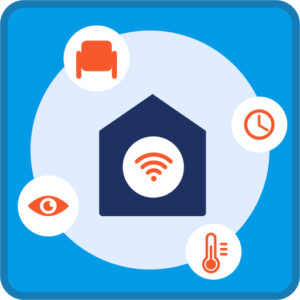
Rently’s “Holistic” Deployment Approach
Rently offers the rental housing market a “holistic” approach to smart home technology deployment. We deploy all devices, to all clients, for all phases of the leasing lifecycle.
Our team understands that when it comes to smart home deployment, it’s not “one-size-fits-all”. We work with all types of operators, multifamily and single family, from small local portfolios to nationwide enterprise-level institutions.
Rently always remains focused on our customers’ best interests. Just as we have taken sound financial steps to grow our own business, we apply that same philosophy when recommending deployment options that allow for stable, low-risk expansion, rather than financial or technical over-extensions.
Our unified platform allows managers to deploy and scale up at their own pace, all while providing oversight and control. For operators who are ready for larger deployments, we have the capacity to quickly upgrade any property with smart home technology.
Rently is driven by the desire to streamline leasing activity, optimize property management, and create premier resident experiences.
Our solutions make a positive impact on the everyday lives of renters and managers, and we are excited to bring the benefits of smart home technologies to the rental housing market.
